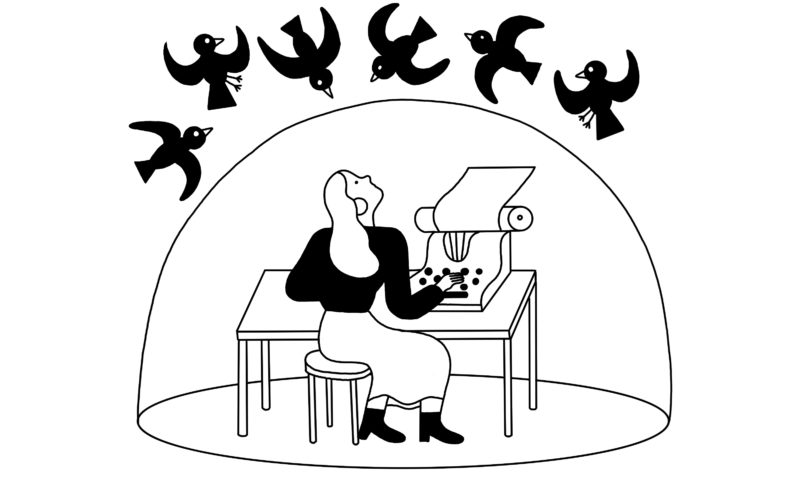FREEDOM
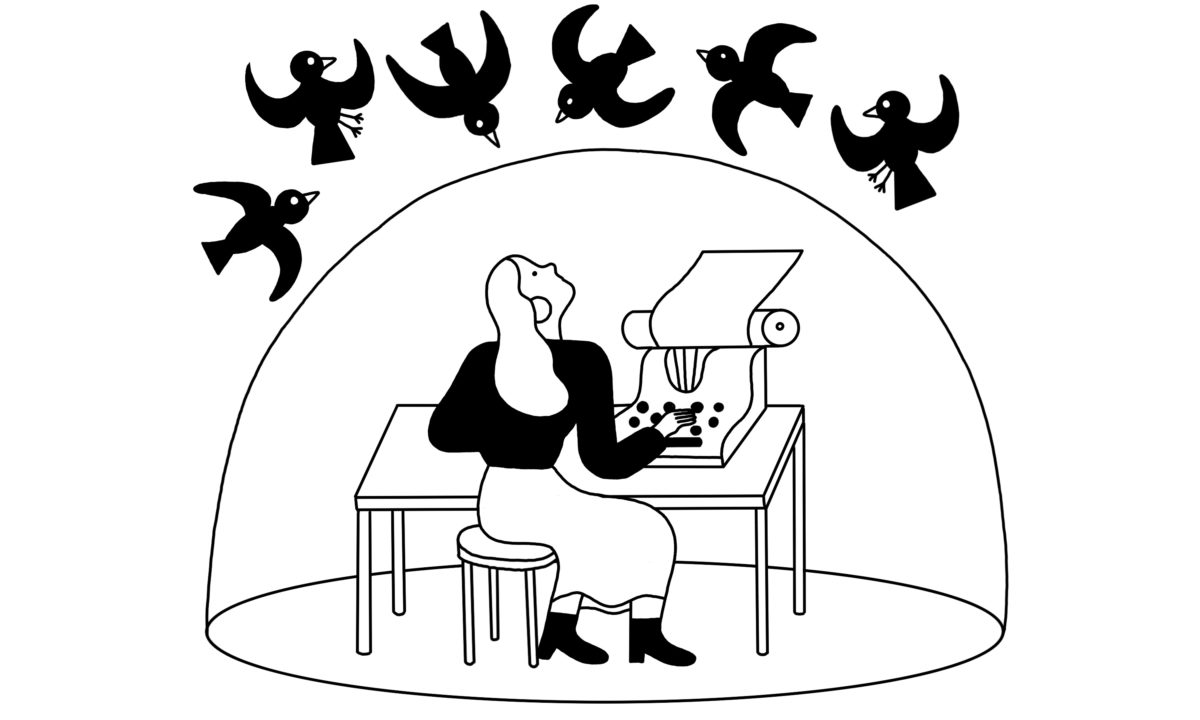
My husband uses an app called Freedom to block his access to distracting websites—mostly Twitter and the writers’ group chat we both belong to—when he wants to focus on writing. Often, I’ll ask him if he’s seen some stupid tweet or other, and he’ll say, “I’m running a Freedom session.” Or he’ll volunteer this information unprompted, a way of holding himself further accountable—a way of announcing that, to whom it may concern, I’m writing today; whatever may occur, I am writing. It’s related to what I’m accomplishing internally when I write the word WRITE in all caps in a Saturday square on my wall calendar: I’m pre-committing my time and attention, pre-refusing all invites to brunch or park-sitting; I’m promising to put off any other obligations (cleaning, grocery shopping, exercise) for another day. I still use a wall calendar; I do not use productivity apps.
And yet I thought they might be interesting to try. A friend of mine has a kind of Proustian questionnaire that she fills out at the end of every year, a set of questions she uses to reflect on the time that has passed since she last filled it out. She shared the list of questions with me years ago, and ever since, I have somewhat lived my life toward one of the questions: “What did you do this year for the first time?”I’m incentivized, if only by pride, to seek out novelty. There was the year I rode a motorcycle for the first time. The year I went dogsledding. I like to answer the question with this type of experience—contained in a day, picturable. I want the words in my answers to make me see colors. I would like, one year in the future, to answer the question with “hot-air ballooning.” My friend who owns the motorcycle, and who took me on an only mildly frightening loop around Falmouth, Maine, told me he always notices different smells from that vantage and at that speed than he would while walking or driving. Perhaps, I thought, I’d notice something new about time or my mind while using a focus app. Perhaps I’d try one, or a few, the next time I wanted to write.
But on the first day I’d blocked off to write, I ran into a problem. I couldn’t install Freedom on my laptop, because technically it belongs to my employer, and I don’t know the administrator password. I found and enabled a Chrome extension with similar functionality, called LeechBlock. Its options felt overly complicated. In addition to choosing which sites to block and when to block them (within certain time periods, and which time periods, or after a time limit, or both at once?), I had to specify how the tool should block them: By showing another specified URL instead? By applying a filter (grayscale, blur, invert, sepia)? By closing the tab? With great force, I realized: I would so much rather be writing than figuring out how to use these apps.
THE POMODORO TECHNIQUE
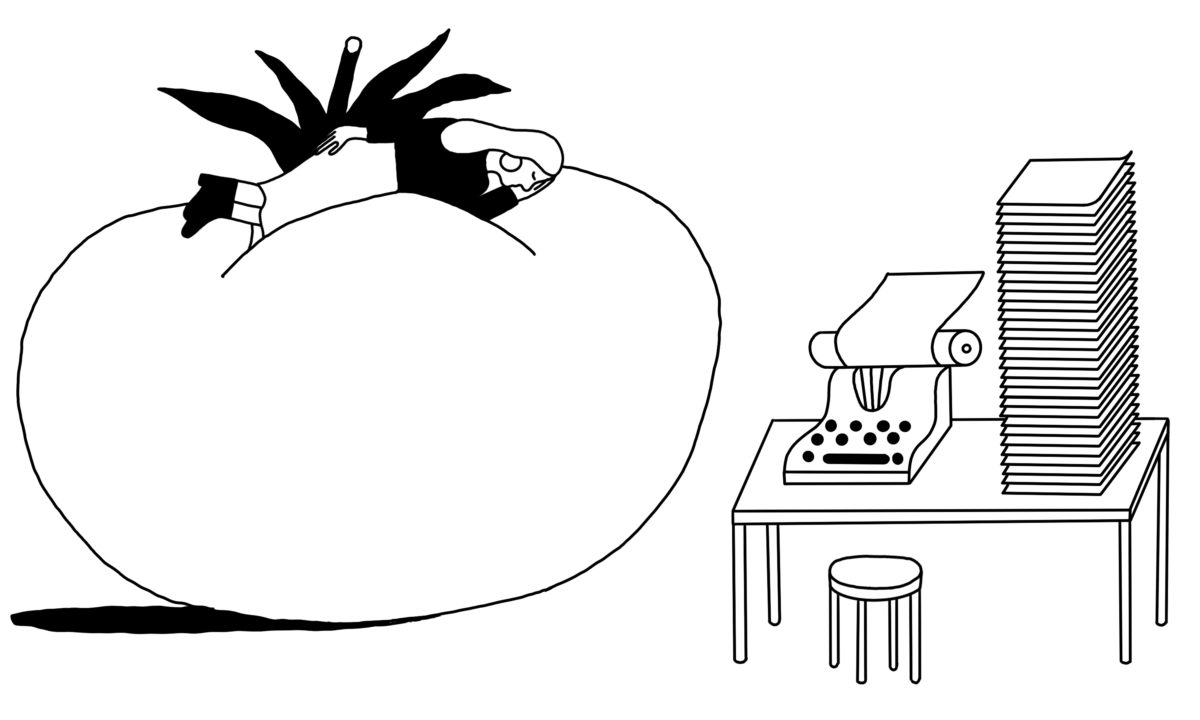
There are lots of apps and browser extensions designed around the Pomodoro Technique—Tomato Timer, Focus Keeper, Marinara—but you don’t need an app to follow the method. It dates back to the 1980s, when an inattentive Italian student named Francesco Cirillo started using a tomato-shaped kitchen timer to enforce blocks of dedicated study time, followed by timed breaks. The official technique, as outlined in the book Cirillo went on to write, advises working on a single task for twenty-five minutes (one pomodoro), then taking a five-minute break. After completing four pomodoros (“an indivisible unit of time,” according to the website Todoist—the quantum of the method), you’ve earned a longer break.
I can see why productivity apps are good for making you work on something you don’t want to work on—your taxes, for example. But once I know what I want to write about, I love writing, and a pomodoro wouldn’t be enough. My ideal unit of writing time is all day: a Saturday when I wake up early and start right away and work until it’s dark, or at least until cocktail hour, when, like Joan Didion, I like to pour a drink and read over my work. “The drink helps,” she says. “It removes me from the pages.” It creates a diaphanous veil to read through. I take breaks to eat—writing makes me hungry; I once read that the brain uses 20 percent of the body’s energy, though it makes up only 2 percent of the body’s weight—and sometimes to glance at the internet. I don’t bother to block the internet; when I’m in the mood to write, the internet is boring in comparison. I just need the mood and a Saturday.
WRITE OR DIE
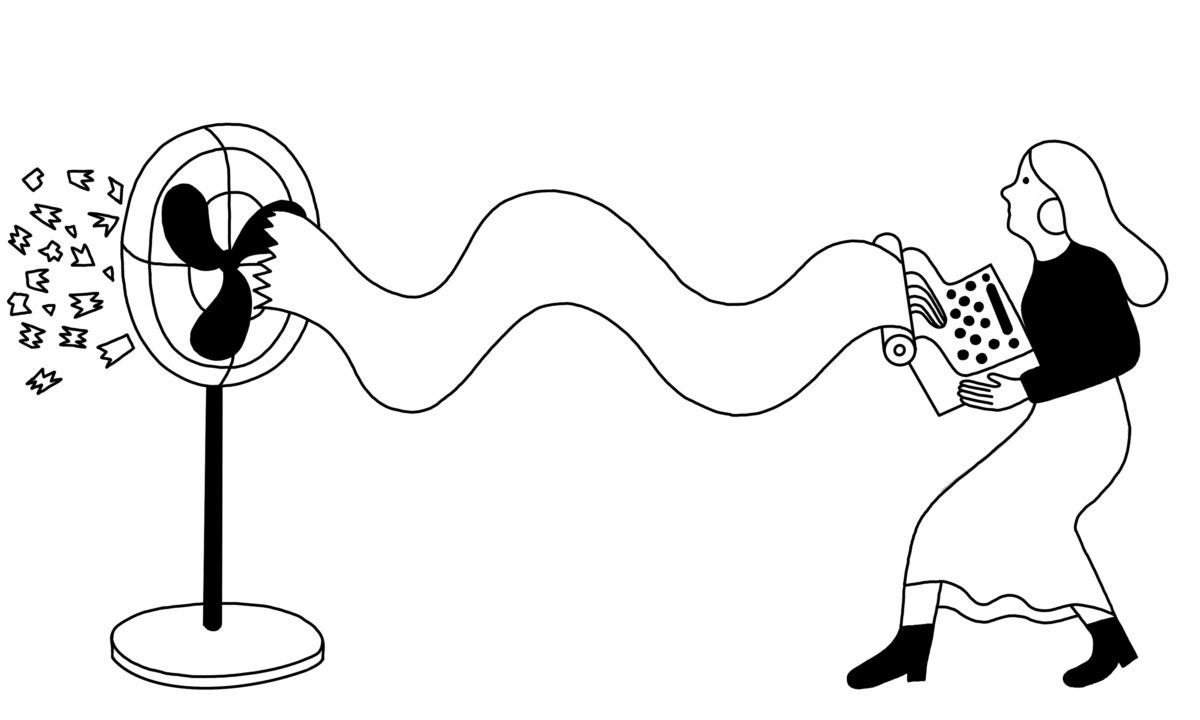
When I asked my group chat if anyone ever uses productivity apps, a few mentioned Freedom or similar blocklist-type apps—there’s one called SelfControl that the Zapier blog describes as “truly the nuclear option for blocking distractions,” because the sites on your blocklist stay blocked even if, junkie-like, you try to outsmart your own desire to focus by deleting the app. The only way around it is to reinstall your whole OS. One friend told me she sometimes uses Write or Die, which, in “kamikaze mode,” discourages stopping to think or revise or despise what you’ve written by deleting all your work if you pause any longer than a preset grace period. The Most Dangerous Writing App, a similar tool, nukes all your progress if you stop typing (surely it can’t tell if you’re writing or merely typing) for more than five seconds.
This app intrigued me—it sounded like a real experience—but it also filled me with fear. I don’t find that editing as I write disrupts my flow. I would even say that part of the interesting work of writing, the part that makes me hungry and makes the day go by faster, is paused time, time spent staring into space or spontaneously standing up and pacing around. I’m not that drawn to the concept of typing before I’ve had the thoughts I want to type—and once I’ve done so, I’m vain and precious about those thoughts. It’s why I almost never delete my old tweets; it’s why I beg copy editors to leave my mistakes as they are—sometimes I want my writing to be a little wrong. I even had the paranoid delusion that by using a morbid horror app to produce a bunch of words I wouldn’t care about, I’d somehow invite evil forces inside my machine to delete the files I’d worked on slowly and that I did care about. Needless to say, I don’t have to be reminded to back up my hard drive.
FOREST
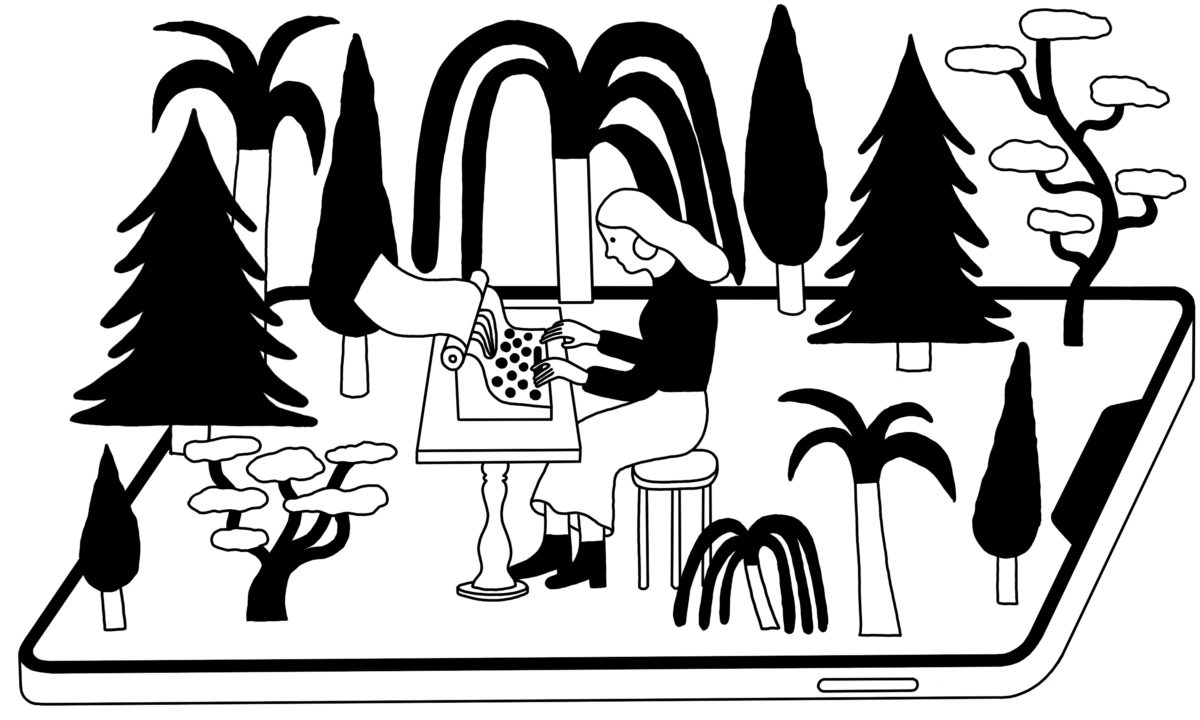
During my phase of researching focus apps, Forest was the one that sounded the most essentially silly. You set a timer for however long you don’t want to look at your phone, you put your phone down, and a little virtual sapling starts to grow. Pick up your phone before the timer goes off—breaking the pomodoro—and your fake tree will wither and die. But you can grow your own sim-world forest if you stay focused (or stay off your phone and dick around on your laptop instead). On the somewhat noble side, the paid version lets you spend “virtual coins” to donate money through the app to the Trees for the Future nonprofit, which plants real trees. Then again, you could just donate to the nonprofit directly. Real trees don’t care if you have writer’s block.
Why am I writing about productivity apps? I wanted to think about productivity. I wanted to meditate on my low productivity over the previous year, at least compared with my usual output. Before the pandemic, I’d always been able to manage both my day job and a writing career, and to do both rather well. I suddenly felt I was doing both badly. I didn’t really lack time. We weren’t traveling at all, and my social life was greatly reduced. But I felt I had lost my mind—not that I’d gone insane, but that the part of my mind I use to write wasn’t there, or couldn’t be accessed. So few of my thoughts were interesting to me. I feared the change was permanent, that my creative mind was not just injured but dead, dead tissue that would have to be removed.
For much of 2020 and 2021, I had enough Saturdays but not enough mood. I didn’t feel like writing, and I couldn’t do what I felt like doing. I felt like browsing in the library, then going out for sushi, then doing karaoke. I felt like winning major awards for the books I’d already written, getting checks so large I could quit my job and sleep late every day. I felt like going home, not the home I lived and breathed in all the time, but home home, my parents’ house. There were moments when I missed my mother so intensely I forgot she was still alive.
Unlike Dorothy Parker, I hated not writing when I wasn’t writing. Yet I don’t really mind not having written, considering I had so little to say. I now think my mind was not dead but in a sort of coma I believe it can emerge from. And I’m trying to remember that I don’t really write for rewards. The rewards are too meager. (Fake little trees.) I write for the feeling of typing after a pause, of waiting until the thought arrives already in the right or just slightly wrong language—the way I want it, the language indivisible from the thought.

